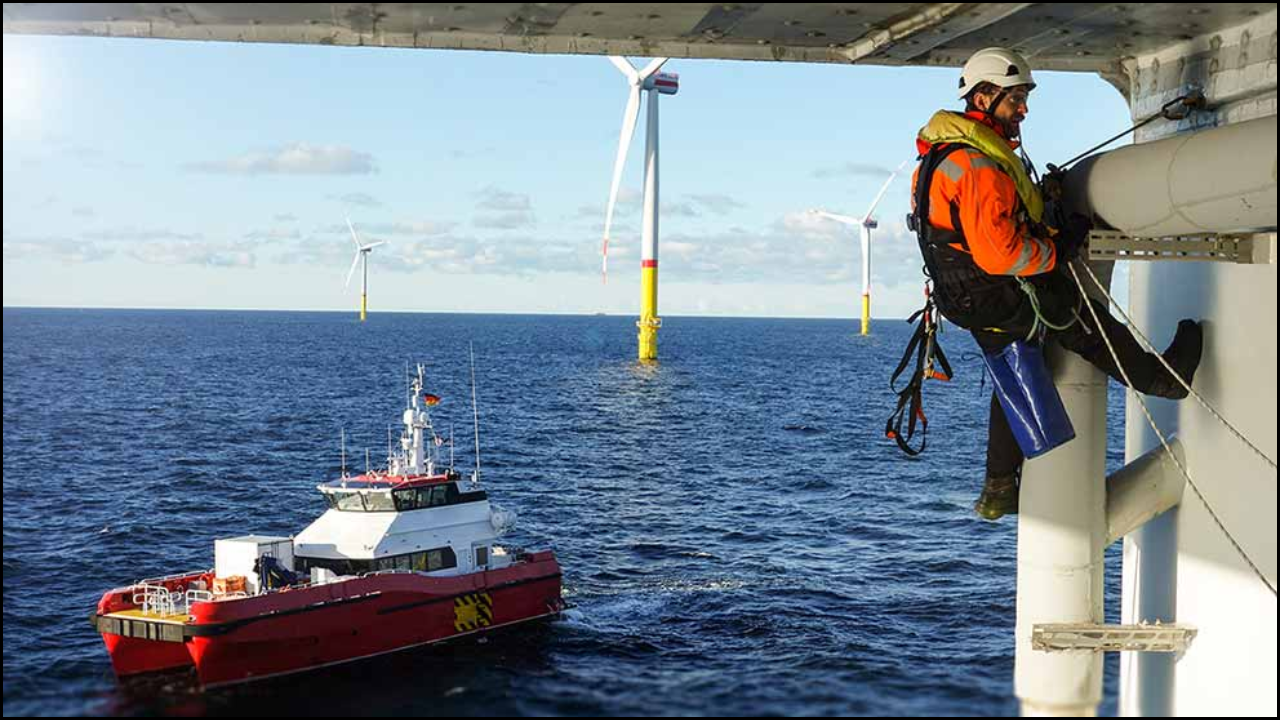
Materials science plays a crucial role in advancing offshore renewable energy technologies. Offshore systems operate in extreme conditions marked by saltwater corrosion, strong currents, fluctuating temperatures, and mechanical stress. The choice of materials determines not only performance and maintenance costs but also the overall lifespan of renewable infrastructure. Through new composites, coatings, and smart materials, scientists are building stronger, lighter, and more sustainable solutions that enable offshore energy to thrive globally.
Table of Contents
The Importance of Materials Science in Offshore Energy Systems
Material selection directly impacts the reliability and efficiency of offshore projects. Each structure, from turbine blades to underwater cables, must withstand environmental degradation and mechanical fatigue for decades.
- Corrosion Resistance: Prevents structural weakening in saltwater environments.
- Lightweight Strength: Reduces installation costs and improves energy efficiency.
- Fatigue Resistance: Ensures long-term performance under continuous motion and vibration.
- Thermal Stability: Maintains strength and conductivity under changing temperatures.
- Sustainability: Encourages the use of recyclable and eco-friendly materials.
Key Offshore Renewable Energy Technologies and Their Material Demands
| Technology | Material Requirements | Main Challenges |
|---|---|---|
| Offshore Wind Turbines | High-strength steels, carbon fiber composites, protective coatings | Corrosion, fatigue, and blade erosion |
| Tidal Energy Systems | Stainless steel, marine-grade alloys, polymer coatings | Cavitation damage and biofouling |
| Wave Energy Converters | Rubber composites, flexible polymers, reinforced concrete | Constant stress and saltwater degradation |
| Floating Solar Farms | Lightweight polymers, UV-resistant plastics, and aluminum frames | UV radiation and saltwater corrosion |
| Subsea Cables | Copper, aluminum, and cross-linked polyethylene insulation | Electrical loss, insulation failure, and marine life interference |
Advanced Materials in Offshore Wind Energy
Offshore wind turbines are among the largest moving machines ever built. Their towers, nacelles, and blades demand superior materials for performance and safety.
- High-Strength Steels: Used in towers and foundations for structural integrity.
- Carbon Fiber Composites: Applied in blades to reduce weight while maintaining rigidity.
- Glass Fiber Reinforced Plastics (GFRP): Offer cost-effective alternatives for medium-sized turbines.
- Thermoplastic Resins: Enable recycling of composite components.
- Protective Coatings: Include epoxy or polyurethane layers to resist corrosion and UV exposure.
Materials Used in Tidal and Wave Energy Devices
Tidal and wave energy systems operate closer to the seabed and face continuous motion and pressure variations. This demands materials that combine toughness with flexibility.
| Component | Preferred Material | Purpose |
|---|---|---|
| Turbine Blades | Stainless steel or carbon composites | Minimize fatigue under water flow |
| Shafts and Bearings | Titanium alloys or duplex steels | Resist corrosion and wear |
| Floating Structures | Reinforced concrete or hybrid composites | Maintain buoyancy and stability |
| Coatings and Linings | Polymers and antifouling paints | Prevent biofouling and surface degradation |
Corrosion Control and Surface Engineering
Corrosion remains one of the most significant challenges in marine renewable systems. Surface engineering and protective technologies ensure the longevity of offshore structures.
- Cathodic Protection: Uses sacrificial anodes (zinc, aluminum) to prevent rusting.
- Thermal Spray Coatings: Apply metallic or ceramic layers for high resistance.
- Nanocoatings: Offer ultra-thin, self-healing protection against saltwater exposure.
- Hydrophobic Surfaces: Repel water to reduce oxidation and material wear.
- Anti-Biofouling Materials: Prevent algae and organism accumulation on surfaces.
Composite Materials for Enhanced Performance
Composite materials are vital to offshore renewable energy for their combination of strength, lightness, and corrosion resistance.
- Fiber-Reinforced Composites (FRCs): Used in blades and floating platforms.
- Hybrid Composites: Combine metal and polymer layers for improved durability.
- Thermoplastic Composites: Enable recyclability and remolding after use.
- Nano-Reinforced Polymers: Increase stiffness and fatigue strength while reducing weight.
- Sandwich Structures: Provide high load-bearing capacity in marine environments.
Smart and Self-Monitoring Materials
The latest advancements in materials science focus on smart materials that can detect stress, temperature, and corrosion automatically.
| Smart Material Type | Function | Application |
|---|---|---|
| Piezoelectric Materials | Generate signals under stress | Structural health monitoring in turbine blades |
| Shape Memory Alloys | Return to the original shape after deformation | Adaptive connectors and joints |
| Self-Healing Polymers | Repair cracks automatically | Protective coatings for offshore platforms |
| Conductive Composites | Measure stress through resistance changes | Blade fatigue assessment systems |
Sustainability and Recycling in Offshore Materials
Sustainable materials research ensures that the offshore renewable sector aligns with circular economy goals.
- Recyclable Composites: Reduce waste during decommissioning.
- Bio-Based Polymers: Offer eco-friendly alternatives to petroleum-based materials.
- Low-Carbon Alloys: Minimize emissions during production.
- Lifecycle Analysis (LCA): Evaluates the environmental footprint of materials.
- Reuse of Components: Promotes cost efficiency and resource conservation.
Material Testing and Standardization
Testing ensures offshore materials meet the high-performance standards necessary for long-term operation.
| Testing Category | Purpose | Method Used |
|---|---|---|
| Mechanical Testing | Measure strength and fatigue resistance | Tensile and impact tests |
| Corrosion Testing | Evaluate resistance to seawater | Salt spray and immersion tests |
| Fatigue Testing | Assess endurance under repeated loads | Rotating beam and flexural tests |
| Thermal Testing | Analyze expansion and conductivity | Differential scanning calorimetry |
| Field Validation | Confirm performance in real environments | Offshore prototype deployment |
Challenges in Offshore Materials Engineering
Despite progress, offshore materials development still faces technical and economic hurdles.
- High fabrication costs for advanced composites.
- Difficulties in the large-scale recycling of composite blades.
- Unpredictable degradation under combined mechanical and chemical stresses.
- Complex logistics for offshore repair and replacement.
- Need for universal standards to guide material certification.
Research and Innovation Trends
Ongoing materials research focuses on cost reduction, resilience, and smart integration.
- Development of carbon-neutral materials using renewable manufacturing processes.
- Application of AI-driven simulations for predicting material fatigue and corrosion.
- Additive manufacturing (3D printing) of customized offshore components.
- Research into graphene-enhanced coatings for superior durability.
- Growth of university–industry partnerships to accelerate innovation.
Socio-Economic and Environmental Benefits
Improved materials enhance not only technological efficiency but also socio-economic stability in coastal regions.
| Benefit Type | Description |
|---|---|
| Economic | Longer equipment life reduces replacement costs and stimulates local industry. |
| Environmental | Corrosion-resistant materials minimize pollution from metal degradation. |
| Social | Creation of skilled jobs in advanced materials research and manufacturing. |
| Operational | Increased reliability of energy systems ensures steady power supply. |
Global Examples of Offshore Material Innovations
| Country | Research Institution or Company | Notable Contribution |
|---|---|---|
| United Kingdom | Offshore Renewable Energy (ORE) Catapult | Testing of composite blades and corrosion coatings |
| Denmark | Ørsted | Use of recyclable turbine blades and hybrid foundations |
| Japan | NEDO | Research into marine corrosion-resistant alloys |
| United States | Sandia National Laboratories | Development of fatigue-resistant wind materials |
| Germany | Fraunhofer IWES | Design of thermoplastic and bio-based composites for offshore use |
Future Implications
Materials science forms the foundation of offshore renewable energy innovation. By developing corrosion-resistant, lightweight, and recyclable materials, researchers are enabling technologies that can endure harsh marine conditions while supporting global sustainability goals. Continued collaboration among scientists, engineers, and industries will ensure offshore renewable systems remain efficient, durable, and environmentally responsible — paving the way for a cleaner and more resilient energy future.





